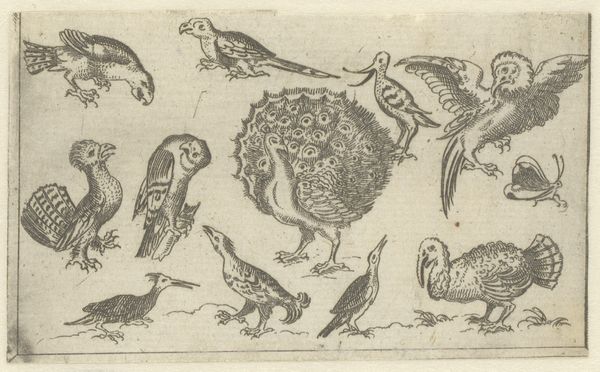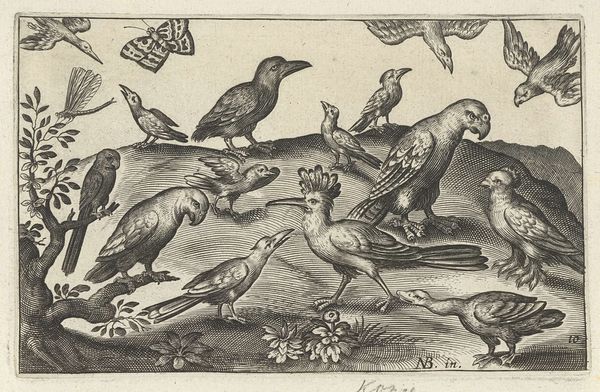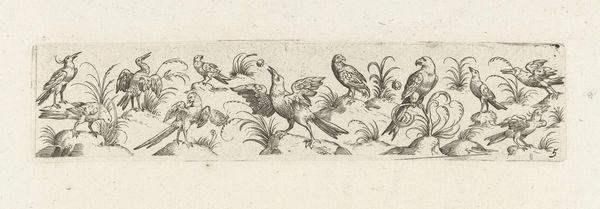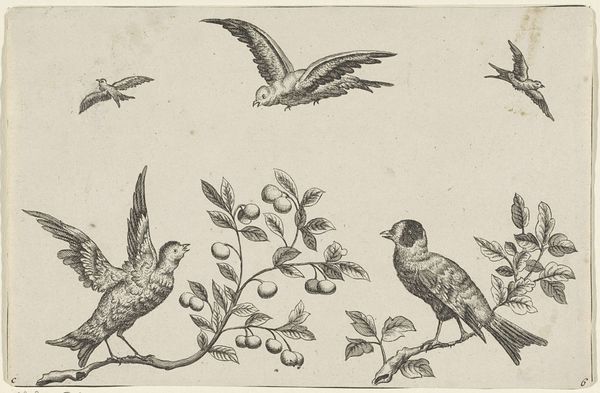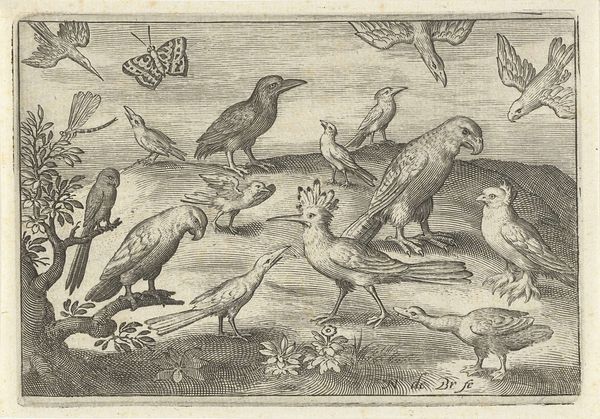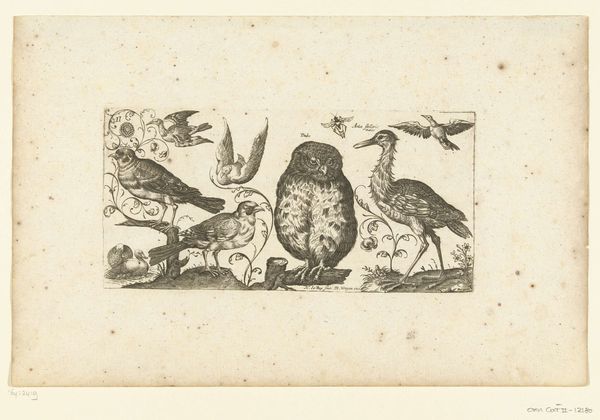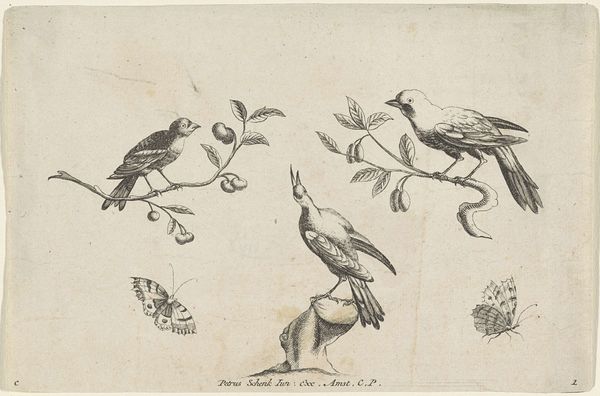
drawing, ink, engraving
#
drawing
#
narrative-art
#
baroque
#
pen drawing
#
animal
#
ink
#
line
#
engraving
Dimensions: height 36 mm, width 184 mm
Copyright: Rijks Museum: Open Domain
Curator: Well, look at this whimsical gathering. This is "Fries met tien vogels en een insect," which translates to "Frieze with ten birds and an insect," created around 1607 by Pieter Serwouters. Editor: Ten birds and a bug, you say? I like the sound of that. My first impression is it feels like a decorative scroll, perhaps adorning a shelf. It's a rather detailed doodle, almost a fever dream of feathers and foliage. Curator: That's a wonderful way to put it! Serwouters created this pen drawing in ink with incredible attention to detail, reflective of the late Northern Mannerist style and the influence of the burgeoning Baroque. Think of these friezes as common in domestic settings and as design samples for skilled craftsmen. Editor: So this wasn’t necessarily hung on a wall as we see it now but served as inspiration? Makes it feel all the more intimate. Each bird has its own personality, though. Look at the bird on the right in that curly tree— it almost seems like he's judging us! Curator: Indeed! Note how Serwouters renders their individual behaviours and interactions with their environments, echoing the emerging scientific curiosity and documentation of the natural world during the late 16th and early 17th centuries. This reflects how Dutch artists responded to shifts in scientific advancement at the time. Editor: So it is like a visual index, but not as serious or stern. I suppose they found room to put in a bit of fun into a sample collection of illustrations? The contrast of light and shadow in some areas really accentuates the almost cartoony birdlike qualities, not unlike what one might find in the margins of a manuscript. I see an interesting visual pun where the negative space brings some of the foliage together. Curator: It's fascinating how these natural studies served simultaneously artistic and didactic functions. While these types of sketches served artisans' decorative interests, they are invaluable to historians like me because of the insight into period attitudes towards nature. Editor: And for us as artists, these old works reveal what’s always exciting. I've always found in the old masters what is playful and alive in what could be just another study. Serwouters brought his bird illustrations to life in a way that is quite enduring, it seems to me. Curator: I concur; this piece showcases a historical moment where natural observation and artistry met, leaving us with an intricate snapshot from the early 17th century. Editor: Precisely, a reminder that even scientific illustration leaves a personal artistic trace that resonates beyond the subject of study!
Comments
No comments
Be the first to comment and join the conversation on the ultimate creative platform.



